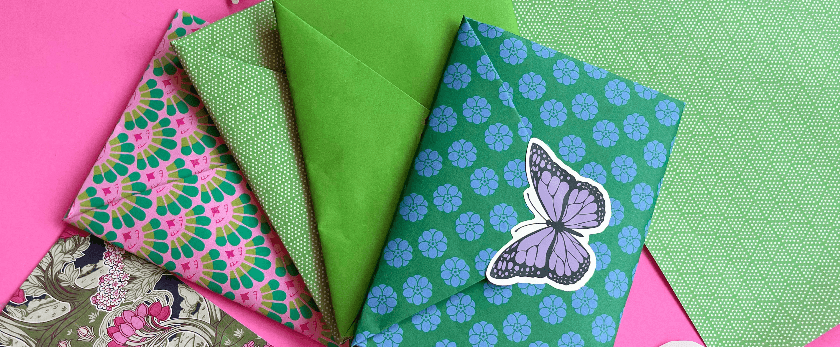In today's world, where we are constantly bombarded with news about climate change and the need for sustainable living, it's important to take small steps towards a greener lifestyle. One simple way to do this is by making your own envelopes at home. Not only is it a fun and creative activity, but it also helps reduce waste and promotes responsible consumption. In this article, we'll discuss why traditional envelopes are bad for the environment, why making your own is a better alternative, and provide a step-by-step guide on how to make your own homemade envelopes.
Why Traditional Envelopes are Bad for the Environment
Traditional envelopes, made from paper or plastic, have a significant impact on the environment. Here are some reasons why:
- Deforestation: Paper envelopes are made from trees, and the production of paper contributes to deforestation. This not only destroys natural habitats but also reduces the Earth's ability to absorb carbon dioxide, a major contributor to climate change.
- Energy Consumption: The production of paper envelopes requires a significant amount of energy, which mostly comes from non-renewable sources like coal and oil. This contributes to air pollution and greenhouse gas emissions.
- Water Pollution: The production of paper envelopes also involves the use of chemicals and dyes, which can contaminate water sources and harm aquatic life.
- Landfill Waste: Plastic envelopes, on the other hand, take hundreds of years to decompose in landfills, contributing to the growing problem of plastic pollution. Even paper envelopes, if not recycled properly, can end up in landfills and take years to decompose.
Why Making Your Own Envelopes is Better for the Environment
Making your own envelopes at home is a simple and effective way to reduce your environmental impact. Here's why:
- Reuse and Recycle: By making your own envelopes, you can reuse materials that would otherwise end up in the trash. This reduces the need for new materials and promotes responsible consumption.
- Less Energy Consumption: Making envelopes at home requires minimal energy, compared to the production of traditional envelopes. This helps reduce greenhouse gas emissions and air pollution.
- No Deforestation: By using materials that you already have at home, you are not contributing to deforestation. This helps preserve natural habitats and the Earth's ability to absorb carbon dioxide.
- Less Waste: Homemade envelopes can be easily composted or recycled, reducing the amount of waste that ends up in landfills.

What You'll Need to Make Homemade Envelopes
Making your own envelopes is a simple and fun activity that requires minimal materials. Here's what you'll need:
- Paper: You can use any type of paper for your envelopes, such as old magazines, newspapers, scrapbook paper, or even old maps. This is a great way to repurpose materials that would otherwise be thrown away.
- Scissors: A pair of scissors will be needed to cut the paper into the desired size and shape.
- Glue or Tape: You can use either glue or tape to seal your envelopes. If using glue, make sure to use an eco-friendly option.
- Ruler: A ruler will come in handy for measuring and cutting the paper into the correct size.
- Decorative Materials: If you want to add a personal touch to your envelopes, you can use stickers, stamps, or markers to decorate them.
How to Make Homemade Envelopes: Step-by-Step Guide
Now that you have all the necessary materials, let's get started on making your own envelopes. Follow these simple steps:
- Choose your paper: Start by choosing the paper you want to use for your envelopes. You can use any type of paper, but make sure it's not too thick or too thin.
- Measure and cut: Using a ruler, measure and cut the paper into a square or rectangle shape, depending on the size of envelope you want.
- Fold the paper: Place the paper with the pattern or design facing down. Fold the bottom edge of the paper up to meet the top edge, creating a crease. Unfold the paper and repeat with the left and right edges, creating two more creases.
- Fold the corners: Fold the top two corners of the paper towards the center crease, creating a triangle shape.
- Fold the bottom edge: Fold the bottom edge of the paper up to meet the bottom of the triangle shape created in the previous step.
- Secure the sides: Use glue or tape to secure the sides of the envelope, making sure to leave the top open.
- Decorate: This step is optional, but you can use stickers, stamps, or markers to decorate your envelope and make it more personal.
- Let it dry: If using glue, let the envelope dry completely before using it.
Congratulations, you have successfully made your own homemade envelope! Repeat these steps to make as many envelopes as you need.
Responsible Disposal of Homemade Envelopes
Once you have used your homemade envelopes, it's important to dispose of them responsibly. Here are some tips:
- Compost: If your envelopes are made from paper, you can compost them along with other paper products. This helps reduce waste and creates nutrient-rich soil for your garden.
- Recycle: If your envelopes are made from paper or cardboard, you can recycle them. Make sure to remove any non-recyclable materials, such as tape or stickers, before recycling.
- Reuse: If your envelopes are still in good condition, you can reuse them for future mailings or as storage for small items.
- Upcycle: Get creative and find new uses for your old envelopes. You can use them as gift tags, bookmarks, or even as a canvas for your artwork.
Conclusion
In conclusion, making your own envelopes at home is a simple and effective way to reduce your environmental impact. By reusing materials and reducing waste, you are taking a small but important step towards a greener planet. So next time you need to send a letter or a card, why not make your own envelope? It's a fun and creative activity that not only benefits the environment but also adds a personal touch to your mail. Let's all do our part in creating a more sustainable future for generations to come.










